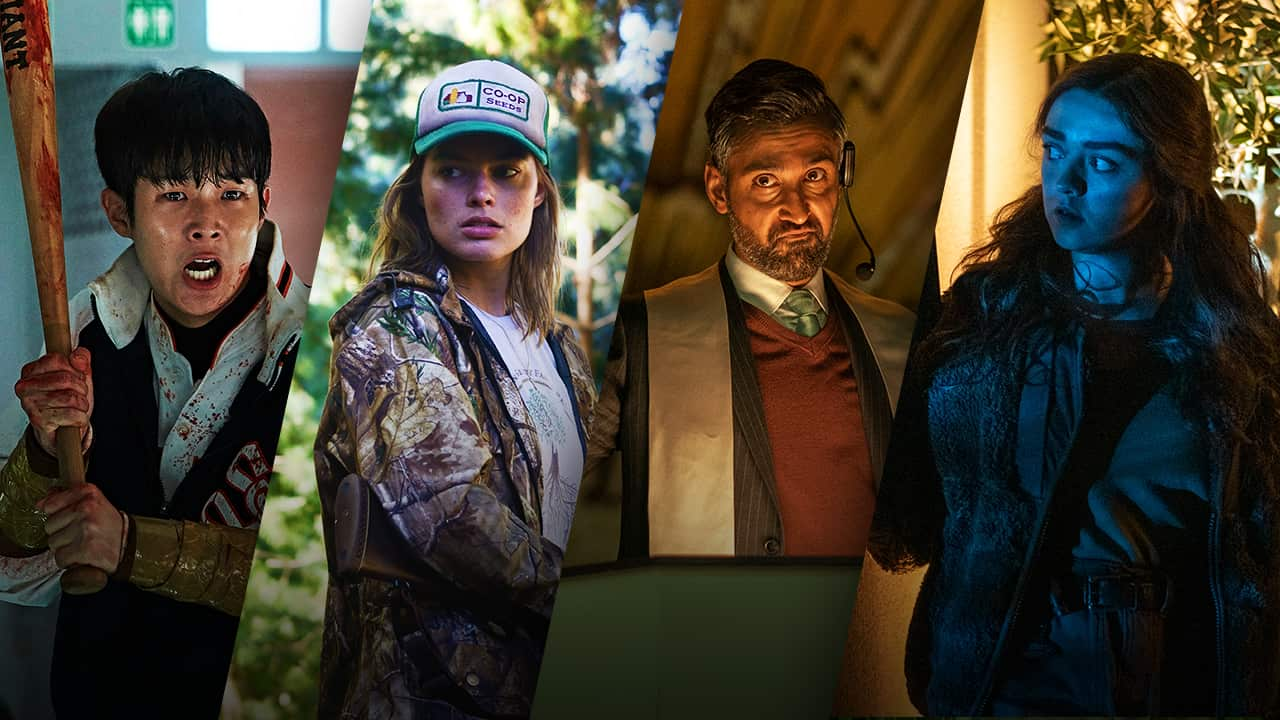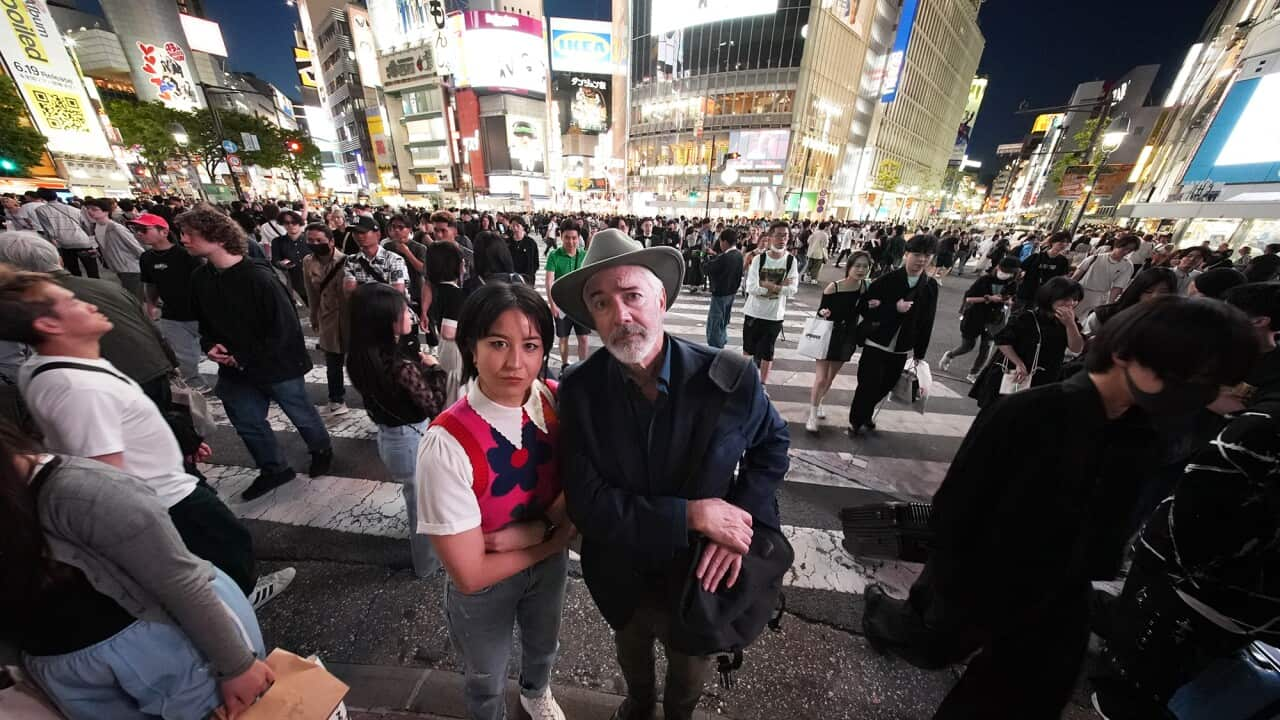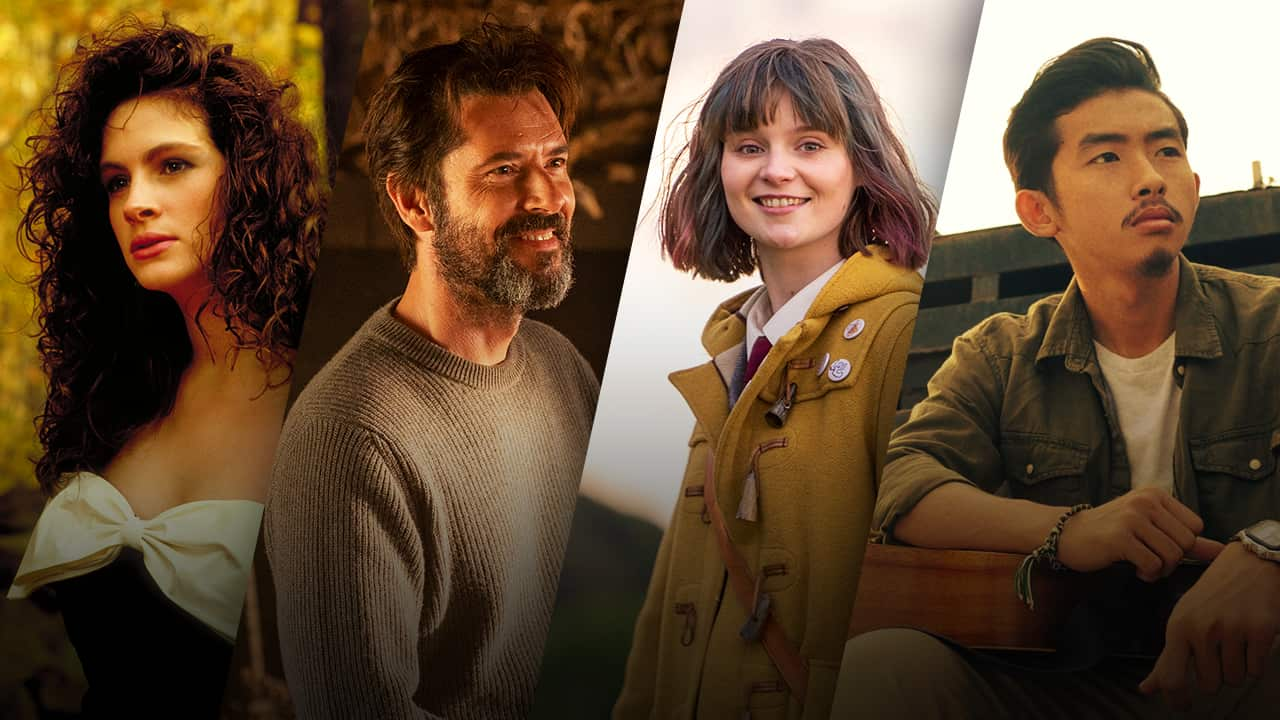This interview was first published in 2016 but has been updated to reflect the fact that the film is now available to stream at SBS On Demand.
Over 20 years ago, Michael Dudok de Wit won the Academy Award for short animation for his deceptively simple but quietly shattering story of the daddy/daughter bond, . In it, a young girl sees her father off at the water’s edge and his subsequent absence casts a shadow over the rest of her life. The film went on to achieve a sort of cult status, and is studied in film schools as a classic example of articulating ‘longing’ on screen.
In 2016 Dudok de Wit returned with his debut feature film, The Red Turtle, another silent little masterpiece, about a shipwreck survivor’s engagement with his surrounds. In it, a castaway tries in vain to float back to civilisation until an encounter with a mysterious red turtle alters his perception of his predicament. The film highlights the Dutch filmmaker’s light touch with Deep Feelings, and, with its connection to the magical wonder of the natural world, it will appeal to fans of Studio Ghibli films. Small wonder then, it’s actually produced by the Japanese animation powerhouse, and marks the first time the studio has backed a Western film.
SBS Movies caught up with Dudok de Wit back in 2016 on the eve of the film’s release in Australia.
Where do your ideas come from?
At very beginning, I ask, ‘What’s the deep feeling I want to explore in a new film, and where do I start?’ ‘What theme do I start from?’
The theme [for The Red Turtle] was quite easy - the castaway on a desert island is something I’d been thinking about for a long time, in fact I’ve loved it since childhood and it’s stayed with me forever. I saw a TV series, Robinson Crusoe, when I was a child and I passionately loved it. It stayed with me as an adult because it’s symbolic for, ‘What’s my place in the universe?’, ‘What would I do if there were no people around me?’, ‘Who would I be if I don’t relate to people?’.
I had written a very short treatment/synopsis on this some 30 years before, thinking about how would it be interesting for a film. I just showed it to one person and put it in a drawer – it wasn’t mature at all. It was not appropriate for a short film, so I couldn’t do anything with it.
I thought, ‘If I do anything, if I make a feature, it has to be on this theme’. I like it narratively, but also the idea of exploring a new world – in this case a tropical island – really appealed to me. What kind of vegetation, how would the light work, what would be the sound etc.
The other question I asked myself was about which deep feeling I wanted to explore most. It was the deep awe for nature. Deep, deep awe. I don’t mean lovely animals and plants and sunsets, but also the way light falls, the way shadows are, the way skies change and the emotions we feel when we are in nature.
There was also a third motivation which is always there with my work. I thought, I want to do something very different that’s a new style, something that’s very striking. It should not just be visually beautiful, it should be visually, extraordinarily beautiful!
The three things came together and within that same day I started working on that. The news to make a feature came very suddenly and that came very easily.
How did you hit upon the idea for what this island and remote natural world would look like?
That was my big question too. I started collecting things. I looked at all the Robinson Crusoe films I could find, for ideas but also to see how I should not do things. One interesting thing I discovered was that Bunuel had even made a Robinson Crusoe film – I didn’t know he had made one. Gradually, I got lots of photos and I asked Studio Ghibli if I could do a research trip. I chose the Seychelle Islands because they have big granite rocks which are extraordinary – very round rocks that are almost sensual, organic shapes. They were also just one flight away. There are of course beautiful islands closer to Australia but it would be a long, long trip and there was a time pressure. [Laughs] There was a flight straight from London where I live to the Seychelles. It was an obvious choice.
Can you elaborate on what kind of story you didn’t want to do?
I didn’t want to literally tell the Robinson Crusoe story, which basically takes a long time explaining how he survives; how he cultivates food, finds water, shelter. It’s very interesting but that’s not my mission. Secondly, Robinson Crusoe was typical of the time when the human race felt the best thing it could do was dominate nature. We’ve moved on since. We’ve done that and seen the results…
I thought it would be interesting if my castaway doesn’t try to build beautiful shelter and do beautiful chairs and tables, but just accepts nature as it is and feels comfortable with that. Robinson Crusoe is stuck, he wants to leave but he can’t, but he kind of makes it his universe and when other people arrive in his life he lives with them and controls them etc. In my story I really felt like he wants to leave, full stop. He wants to go home!
I also wanted to avoid all the usual clichés. It sounds very light but it was important to me: all tropical beaches have palm trees. All of them. That gives them their typical character, but I thought it would be nice to have an island without palm trees. It’s a small detail, but it is a point of difference.
I knew we would have same sensibility before we talked.
Like you say, he just wants to build one successful raft and get out of there! You use repetition a lot in your films. Father & Daughter, for example, is one long story of perseverance, of going over the same routine, hoping this time things might be different. Why does repetition interest you so much, as a storyteller?
I love repetition! I use it a lot in my short films too, as you say. Repetition is not a trick; every day we live repetition. We go through the same routines, our whole life is based on repetition. But it’s not just pure repetition; by repeating the same thing we see gradual evolvement – there’s progress through repetition – ideally, of course.
There’s something physical about repetition. I wouldn’t say we enter into a trance but we enter a rhythm, we vibrate with that rhythm and accept it or adopt it. Once we enter into that rhythm, we let ourselves be carried. Obviously the same happens through music.
Initially, he was going to build more rafts than he ends up doing. There are three and then the fourth raft is incomplete. Originally my story had two more rafts because I like the idea that he keeps trying to leave the island. But it became too heavy, narrative-wise. Also it may sound very light but it’s important: Very early on in the project, the producers decided on a length limit. They said we should go for an 80 minute film. I immediately agreed with that. I found it was no problem. In animation, every minute costs a fortune and they kind of calculated that the film should not be too short but not too long either. The Studio Ghibli people have experience of films that have been very long, so they have firsthand experience of how extended the production time is and how expensive the film is and how they have gone over budget etc. so we have a fixed budget and fixed length of film. Now, in 80 minutes, if I tell a story where the man over and over tries to leave the same spot it takes a very big chunk of the 80 minutes [laughs] and there was much more I wanted to tell. It was as simple as that. I didn’t feel it was a compromise. Maybe if they had given me 90 minutes I would have given him another go at leaving the island…
…Give him another raft.
Yes! A quick go at making another raft [laughs]

The castaway attempts yet another raft in 'The Red Turtle' (2016). Source: Transmission
That’s a nice question. You are not my first journalist but I don’t think I’ve had anyone ask that before. Yes, I aim for audio silence and also visual silence. I call it ‘timelessness’, which is the same thing: the quality where nothing else is important outside that particular moment. There’s a finer quality to it. I find it hard to pinpoint but it’s a very still moment, not because nothing happens, but because whatever happened before and whatever will happen next doesn’t matter. We’re just there, now.
Now, how do you convey that in a film? There’s no formula to that. Absolutely not. When you apply formula, it becomes a pleasant technique, or a pleasant tool. It’s finer than that. The best thing I can say is, I try to go for that all the time, I go by feeling. Then I ask for feedback. Not necessarily asking professionals or colleagues ‘Can you see the silence?’ or ‘Can you see the timelessness?’ but asking indirectly, how they felt and see their reaction. Or just see that they didn’t say anything, just reading between the lines. It has a subtle quality; it’s very vulnerable. It’s not a big message I want to convey. For those who are sensitive to it, I want it to be there, that’s all.
How did that relationship with Studio Ghibli come about? Have you always felt you shared the same sensibility?
I knew we would have same sensibility before we talked. Takahati made a film with lots of haikus (My Neighbours the Yamadas). That’s the ultimate sensibility, you can’t do that in the west. It’s so silent, so pure, so simple. It’s simply impossible but yet he did that. I have to admit I like Japanese culture in general. It’s chaotic, it’s crass, it’s big, but in contrast, it’s also very pure and no coincidence that the Zen philosophy is so big in their culture.
They [Ghibli founding executives Isao Takahata, Hayao Miyazaki and Toshio Suzuki] came to me saying they very, very much liked Father & Daughter, and they didn’t say it superficially. They even paid the ultimate compliment to me: They said the film in a way is very Japanese. In that sense we clicked already. That’s a very good starting point for a relationship! We spoke about it afterwards and although we never pinpointed it, it’s a sensitivity for nature that we have in common. They have culturally, a very special relationship with nature, a Shinto and Taoist philosophy. They see nature as deeply alive, and not just something of stones, animals and plants. I am from the west so I see it differently but really, not that differently. I grew up with a lot of nature around me – a lot, but also I see it in most of my friends who have always lived in cities. We have that sensitivity too, but we express it slightly differently.
Thirdly, in [Ghibli] films they believe in the goodness of human beings. In their films they have bad guys but they believe deeply in having respect for human beings. And me too, so it’s a positive thing. Even in a film like Grave of the Fireflies, where there is a lot of violence and lot of moments of people being very selfish, it’s a film which deeply trusts in humanity.
What was the process of collaborating with them?
I occasionally went there, they came, I talked with Takahata a lot – he was the spokesperson for Suzuki and usually a few other people there. Often I didn’t know who – he often said ‘we’ discussed it. They just wanted to verify that everything went all right. Very early on I started asking for their opinions, and that took them by surprise. I said, ‘Yes, I really, really value your opinions. I’ve got a lot to explore to learn which you can help me with. There are symbols in the film’s sensitivities in the film which I want your opinion on’. That’s why Takahata is credited as artistic producer – he gave his opinions a lot but he always finished by saying, ‘It’s your film, you’re the director, you decide’. In other words they really respected it was the director’s film, like they do with their own films in the studio.
Stream free On Demand

The Red Turtle
adventure • animated • 2016
adventure • animated • 2016

YOU MIGHT ALSO LIKE

It’s the End of the World As We Know It Collection – and we feel fine



